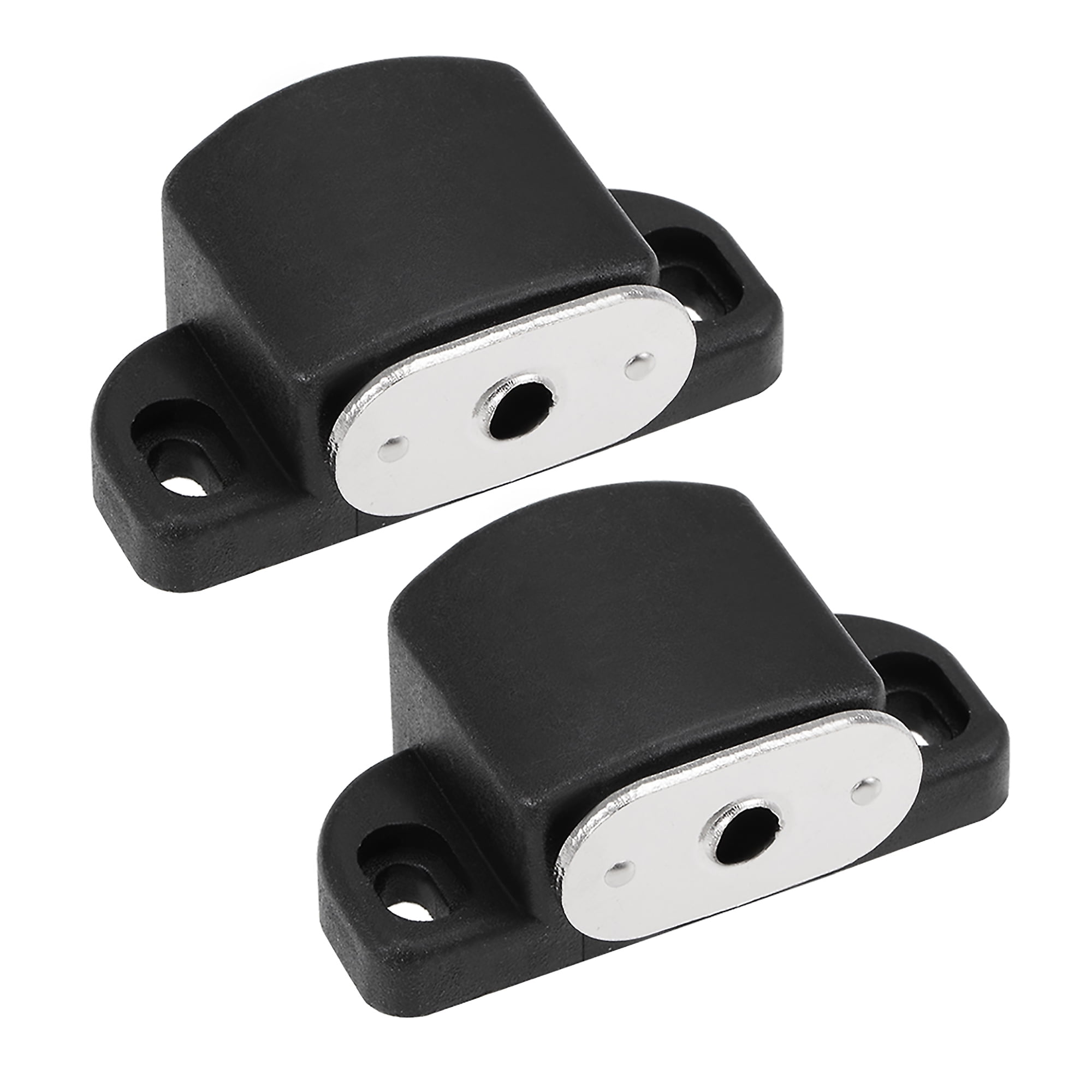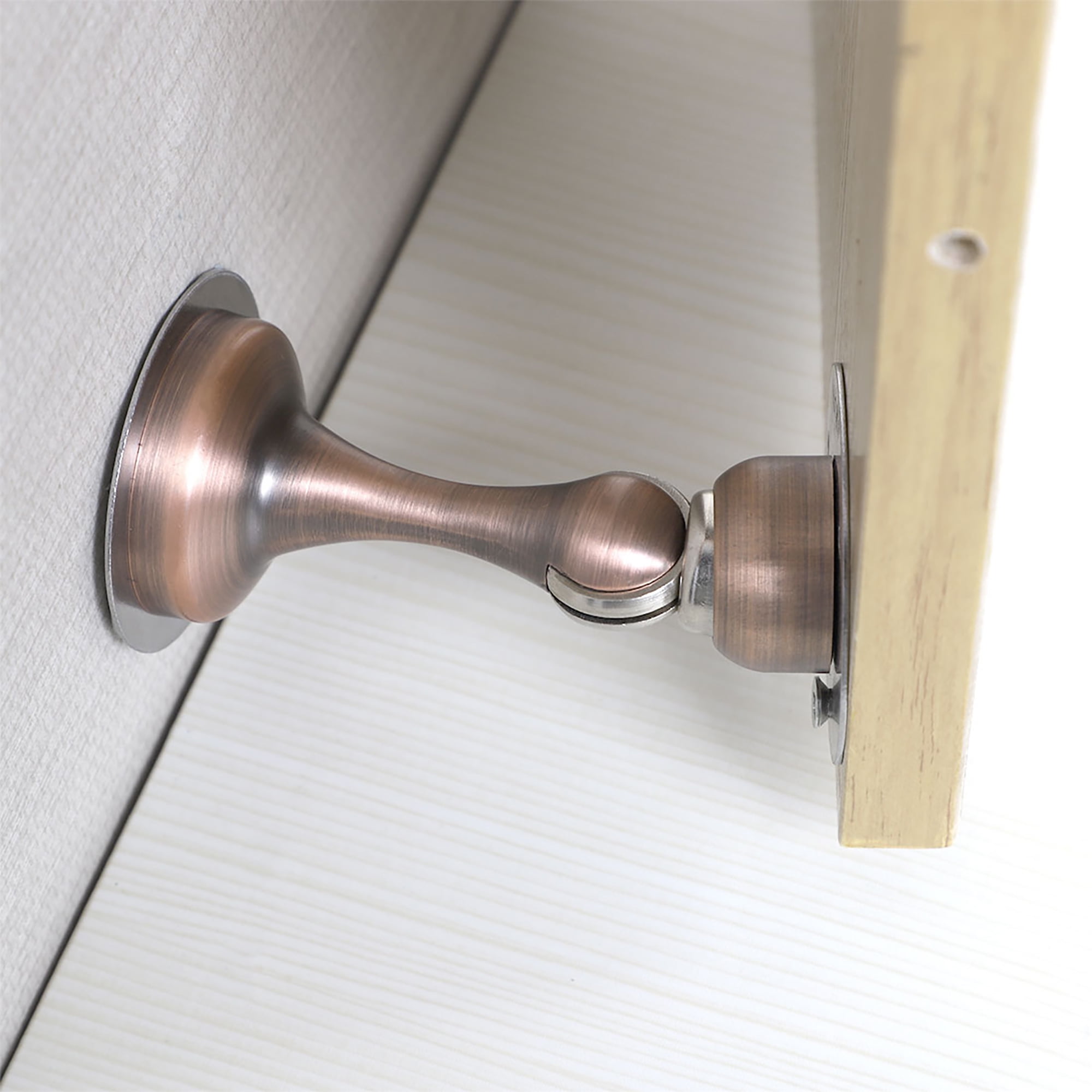Understanding Magnetic Cabinet Door Catches

Magnetic cabinet door catches are a common and convenient way to secure cabinet doors. They are simple to install and use, and they provide a secure and reliable closure.
Mechanism of Magnetic Cabinet Door Catches
Magnetic cabinet door catches consist of two main parts: a magnet and a strike plate. The magnet is typically attached to the inside of the cabinet door, while the strike plate is attached to the cabinet frame. When the door is closed, the magnet is drawn to the strike plate, holding the door securely in place. The strength of the magnetic force determines the holding power of the catch.
Advantages and Disadvantages of Magnetic Cabinet Door Catches
Magnetic cabinet door catches offer several advantages over other types of cabinet door catches:
* Easy Installation: Magnetic catches are simple to install, requiring only a few screws. They can be installed on both wood and metal cabinets.
* Quiet Operation: Magnetic catches are silent and do not make any noise when closing the door.
* Clean Appearance: Magnetic catches are typically small and discreet, blending seamlessly with the cabinet design.
* Durable: Magnetic catches are made from durable materials that can withstand frequent use.
However, magnetic catches also have some disadvantages:
* Limited Holding Power: The holding power of magnetic catches can be limited, especially for heavy doors or doors that are subjected to strong vibrations.
* Susceptibility to Interference: Magnetic catches can be affected by strong magnetic fields, which can cause the door to open unintentionally.
* Not Suitable for All Cabinets: Magnetic catches are not suitable for all cabinets, such as those with thick doors or doors that require a strong latch.
Comparison with Other Cabinet Door Catches
Magnetic cabinet door catches are often compared to other types of catches, such as hinges and latches.
* Hinges: Hinges are used to attach the door to the cabinet frame and allow it to open and close. They do not provide any locking mechanism.
* Latches: Latches are mechanical devices that lock the door in place. They are typically more secure than magnetic catches but can be noisy and difficult to install.
Magnetic catches offer a good balance of security, convenience, and aesthetics. They are a popular choice for many types of cabinets, especially those that require a simple and reliable locking mechanism.
Types of Magnetic Cabinet Door Catches

Magnetic cabinet door catches come in various designs, each suited for different applications and aesthetic preferences. These catches offer a smooth and silent closing experience while providing secure hold for doors.
Surface-Mount Magnetic Cabinet Door Catches
Surface-mount magnetic catches are the most common type. These catches are installed directly onto the cabinet door and frame, providing a simple and straightforward installation process. They are highly versatile and can be used for a wide range of applications, including kitchen cabinets, bathroom cabinets, and closet doors.
- Design Features: Surface-mount catches typically consist of a magnetic plate attached to the door and a corresponding magnet mounted to the frame. They are available in various sizes and finishes to match different cabinet styles.
- Applications: Surface-mount catches are ideal for doors that require a simple and easy-to-install solution. They are commonly used for lightweight doors and are often found in residential settings.
- Functionality: The magnetic force of the catch holds the door closed, while the design allows for a smooth and silent closing experience.
Recessed Magnetic Cabinet Door Catches
Recessed magnetic catches offer a more discreet and integrated look compared to surface-mount catches. They are installed flush with the surface of the cabinet door and frame, providing a clean and seamless finish. These catches are often used in high-end cabinetry and furniture applications.
- Design Features: Recessed catches typically consist of a magnetic plate that is recessed into the door and a corresponding magnet that is recessed into the frame. The design ensures a flush installation and a sleek appearance.
- Applications: Recessed catches are often used for doors that require a more sophisticated and integrated look. They are commonly found in high-end kitchens, bathrooms, and closets.
- Functionality: Similar to surface-mount catches, recessed catches provide a secure hold and a smooth and silent closing experience.
Hidden Magnetic Cabinet Door Catches
Hidden magnetic catches are designed to be completely concealed, providing a truly seamless and invisible closure system. These catches are typically used in applications where aesthetics are paramount, such as high-end furniture and cabinetry.
- Design Features: Hidden catches often utilize magnets that are integrated into the door hinges or other concealed locations. They are designed to be completely invisible, providing a clean and uncluttered appearance.
- Applications: Hidden catches are ideal for applications where aesthetics are a priority. They are commonly found in high-end furniture, cabinets, and doors.
- Functionality: Hidden catches provide a secure hold and a smooth and silent closing experience, while maintaining a seamless and invisible appearance.
Installation and Use of Magnetic Cabinet Door Catches

Installing a magnetic cabinet door catch is a relatively simple DIY project that can enhance the functionality and aesthetics of your cabinets. Magnetic catches provide a smooth and quiet closing experience, eliminating the need for noisy latches or handles. This section will guide you through the process of installing magnetic catches on different cabinet types, ensuring proper alignment and functionality.
Installing Magnetic Cabinet Door Catches
The installation process for magnetic cabinet door catches involves attaching two main components: the magnet and the strike plate. The magnet is typically mounted on the cabinet door, while the strike plate is attached to the cabinet frame. The installation steps may vary slightly depending on the specific type of magnetic catch and the material of your cabinet.
- Step 1: Determine the Placement: Before drilling any holes, it’s crucial to determine the ideal placement for the magnet and strike plate. The magnet should be positioned on the door so that it aligns perfectly with the strike plate on the cabinet frame. Ensure the placement is aesthetically pleasing and allows the door to close smoothly.
- Step 2: Mark the Locations: Use a pencil to mark the precise locations for the magnet and strike plate on the cabinet door and frame, respectively. Be sure to consider the thickness of the door and frame when marking the locations.
- Step 3: Drill Pilot Holes: Drill pilot holes at the marked locations using a drill bit slightly smaller than the screws provided with the magnetic catch. This will prevent splitting the wood or metal.
- Step 4: Attach the Strike Plate: Align the strike plate with the marked location on the cabinet frame and secure it using the provided screws. Ensure the strike plate is flush with the surface of the frame for optimal functionality.
- Step 5: Attach the Magnet: Align the magnet with the marked location on the cabinet door and secure it using the provided screws. Ensure the magnet is flush with the surface of the door.
- Step 6: Test the Catch: Once both the magnet and strike plate are attached, test the functionality of the catch by opening and closing the cabinet door. Adjust the placement of the magnet or strike plate if necessary to ensure proper alignment and a secure closure.
Installing Magnetic Catches on Different Cabinet Types
Installing magnetic cabinet door catches on different cabinet types requires a slightly different approach. Here are some tips for installing magnetic catches on wood and metal cabinets:
- Wood Cabinets: For wood cabinets, it’s recommended to use wood screws to attach the magnet and strike plate. Ensure the screws are the appropriate length to avoid drilling through the cabinet door or frame. If you’re working with a very thin piece of wood, you may need to use a pilot hole slightly larger than the screw diameter to prevent splitting the wood.
- Metal Cabinets: For metal cabinets, you can use self-tapping screws or metal screws to attach the magnet and strike plate. Ensure the screws are the appropriate size and type for the metal material of your cabinets. If you’re working with a thin piece of metal, you may need to use a pilot hole slightly larger than the screw diameter to prevent stripping the metal.
Ensuring Proper Alignment and Functionality
Proper alignment of the magnet and strike plate is essential for the smooth and quiet operation of a magnetic cabinet door catch. Here are some tips to ensure proper alignment:
- Use a Level: When attaching the magnet and strike plate, use a level to ensure that both components are mounted horizontally and vertically. This will prevent the door from catching or dragging as it closes.
- Test the Catch: After attaching the magnet and strike plate, test the catch by opening and closing the cabinet door several times. Adjust the placement of the magnet or strike plate if necessary to ensure proper alignment and a secure closure.
- Adjust the Magnet Strength: Some magnetic catches have adjustable magnet strength. If the door is not closing securely, you can adjust the magnet strength to increase the magnetic force. Conversely, if the door is closing too forcefully, you can reduce the magnet strength.
Magnetic cabinet door catches offer a sleek and quiet solution for keeping your cabinet doors closed. However, when dealing with uneven walls, ensuring a smooth and secure closure can be a challenge. If you’re facing this issue, check out this guide on installing kitchen cabinets on uneven walls , which provides valuable tips for achieving a professional finish.
Once your cabinets are properly installed, you can confidently use magnetic catches for a touch of modern elegance and ease of use.
Magnetic cabinet door catches are a great way to keep your cabinets closed securely, especially when you have valuable items inside. For example, if you’re using an under cabinet wood wine rack to store your finest bottles, you’ll want to ensure they stay put.
These catches provide a quiet and elegant closure, perfect for maintaining a refined look in your kitchen or dining area.
